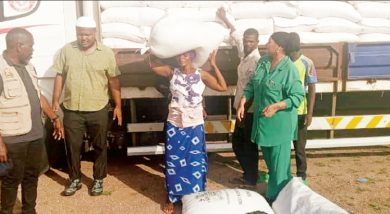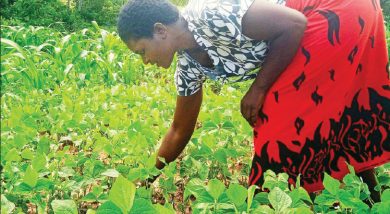Food relief needs K7.2bn

Latest findings of the Malawi Vulnerability Assessment Committee (Mvac) say about 60 000 metric tonnes of maize worth about K7.2 billion will be needed to address hunger that is projected to hit about 1.5 million people across the country.
The Mvac report released this week says the K7.2 billion is based on the assumption that the food would be sourced locally, implying that it would cost more to address the projected hunger if maize were sourced from other countries.
“The total humanitarian food required to support the vulnerable population is estimated at 57 346 metric tonnes of maize with a cash equivalent of MK7.2 billion if sourced locally. The affected districts have annual food deficits ranging from two to five months.
“While the country has registered satisfactory food production at national level during the 2012/13 growing season, there will be problems of food insecurity at household level in 21 districts.
“The total number of people who will not be able to meet their annual food requirement during the 2013/14 consumption period is 1 461 940, representing 9.5 percent of national total population,” reads the June 2013 report in part.
It adds that the Northern and Central regions will be the hardest hit by hunger this year because they realised lower than expected harvests due to late onset of rains, early cessation of rains, erratic rains, prolonged dry spells and flooding.
“As regards severity of the problem, the Northern Region has been affected the most followed by the Central Region and then Southern Region,” reads the report in part.
However, Mvac says the number of people requiring food assistance may change depending on changes on the food situation on the ground.
“Findings of this assessment are based on the assumptions below. Any significant changes to these assumptions will be factored in the update analysis to be conducted in October/November 2013,” reads the report.
Mvac projects that maize prices will average K125 per kg [K6 250 for 50 kg bag] during the consumption period and pick up to a maximum of K200 per kg [K10 000 for 50kg bag] (US$28) during the peak lean period between December 2013 and January 2014.
The 21 districts projected to face hunger include Karonga, Mzimba, Rumphi, Dedza, Dowa, Kasungu, Mchinji, Nkhotakota, Ntchisi, Salima, Balaka, Blantyre, Chikhwawa, Chiradzulu, Phalombe, Machinga, Mangochi, Mwanza, Neno, Nsanje and Zomba.
“Markets will function normally and we expect that traders will move maize from surplus to deficit areas at reasonable transportation costs. Humanitarian response will be planned early to allow interventions to be implemented on time without aggravating the poor food situation in affected areas.
“The assessment further revealed that food crop supplies in the market have generally been steady, however, prices have been rising, thus affecting the purchasing power of most households, particularly the resource constrained households.
“This means that people will be vulnerable due to the rise in prices of food commodities during the consumption period and Mvac needs to closely monitor price trends as this will have an effect on the number of people that will not be able to access their annual food entitlements,” adds the report.
In an interview on Friday, Deputy Minister of Agriculture and Food Security Ulemu Chilapondwa said government is working with donors to raise resources for addressing the projected hunger, adding Norway and other donors are already supporting replenishment of the strategic grain reserves.
Among others, the projected hunger is also expected to deplete assets of the affected households as they will sell them to raise money for food.
“A large proportion of households [66 percent] were engaging in some form of coping strategy to access food. Expenditure on food was more than 75 percent for 42 percent of the households. Government and its collaborating partners should move swiftly to plan response for the needs of the affected population to avoid worsening of the current situation.
“Government and its partners should explore a range of interventions varying from cash-based to food-based intervention in addressing the situation. Interventions that build people’s resilience should be given priority.
“Admarc and private traders should stock enough maize in the affected areas to stabilise supplies and cushion against abnormal price fluctuations,” adds the report.





